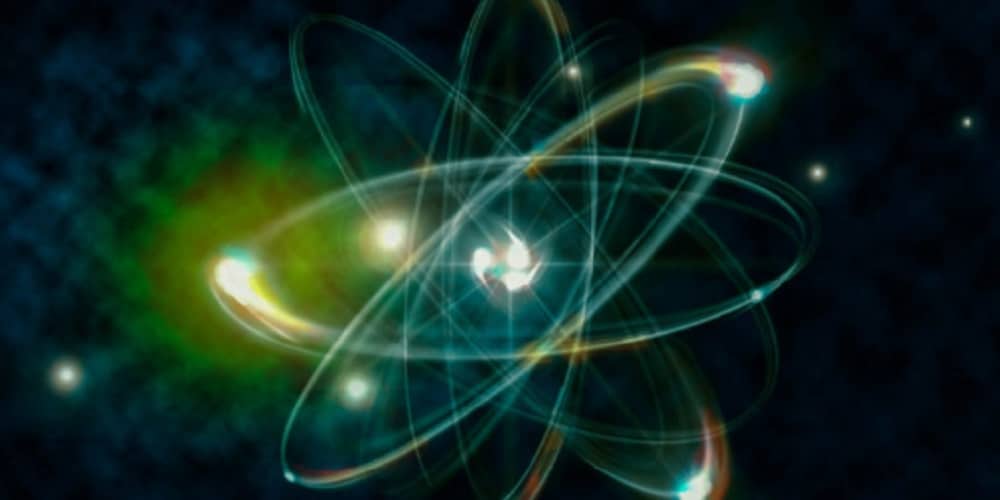What is matter (physics)?
We explain what matter is in physics and what are its main characteristics. In addition, the states in which it is presented and its structure.
-
What is matter (physics)?
According to the physics approach , matter is nothing more than any substance endowed with its own mass and capable of occupying a space at a given time. All physical objects are thus composed of matter , which is equivalent to saying that they are composed of atoms , the minimum and indivisible units of matter, or in some particular cases, by subatomic elements such as protons or electrons (fermionic matter, bosonic matter, etc).
The notion of matter within the field of physics has been defined and redefined over the centuries, since ancient times when the notion of atoms first emerged, until the times of Sir Isaac Newton and, much more recently, those of Albert Einstein. In that sense, the discovery of subatomic matter and the inauguration of particle physics has been the most revolutionary event in the field when thinking about matter.
Therefore, the initial definition of matter we gave was sufficient for the classical branches of physics, but it is problematic within the field of quantum mechanics , where the notions of “mass” and “space” are much more complicated. Perhaps that is why it is preferable to define matter as the result of reactions and the properties of basic components,that is,of atoms.
-
Characteristics of matter in physics

As it has been said before, matter is expected to have certain specific properties, such as mass and volume , that is, that they always occupy a specific space-time region. This means that matter has measurable properties, such as proportions (length, width, height) , density , weight , hardness, fluidity, malleability, and a huge etcetera. To know matter is to understand precisely its physical properties, radically different from those of, for example, energy .
On the other hand, matter must be in one of the known states or phases , according to the distribution and grouping of its particles . This gives us essentially solid, liquid and gaseous matter, although also plasma (ionized gas) or other more complex forms of matter that have been achieved in advanced fields of physics, or simply theorized.
Such is the case with antimatter , for example, which would be the matter composed of antiparticles, that is, atomic forms of a sign contrary to that of ordinary matter, which, when coming into contact with the latter, causes their mutual annihilation.
-
States of the material

There are three main states of matter, according to physics: the solid, the liquid and the gaseous, although there are also other less frequent ones, such as plasma or fermionic condensates, reproducible only in the laboratory. Each physical state has different characteristics and is due to the junction or remoteness of the particles of a substance.
- Solid . The solid state matter has very, very close particles, prey to very intense attractive forces. That is why they behave as a single body, with great cohesion, density and a constant shape. They have resistance to fragmentation and shape memory, that is, they tend to remain the same. In addition, they have low or no fluidity, they cannot be compressed, and when they are broken or fragmented, other smaller solids are obtained from them.
- Liquids . The particles of liquid matter remain united by attractive forces, but this time much weaker and less orderly than those of solids. That is why liquids lack a stable and stable form, as well as cohesion and resistance, so they acquire the shape of the container that contains them. They have a great fluidity (they can be introduced by small spaces) and a surface tension that makes them adhere to the surfaces; they are not very compressible and, with the exception of water , they usually contract in the presence of cold.
- Gases . In the case of gaseous matter, its particles are in a state of dispersion and estrangement such that they hardly manage to stay together at all, since the force of attraction between them is weak, keeping them in a state of disorder. This causes, for example, that they respond very little to gravity and occupy a much larger volume than liquids and solids, since they tend to expand until they occupy the entire space that contains them. They lack a fixed shape and volume, and are sometimes colorless and / or odorless.
Matter can be transformed from one state to another , only by altering the temperature and pressure conditions at which it is found. Its chemical properties, however, will remain the same.
-
Matter Structure

All known matter is composed of indivisible and submicroscopic units, called atoms . Atoms can be of different types, according to the chemical elements known and expressed in the Periodic Table , and they differ from each other as a result of their properties, but also of their composition, since all atoms are composed of the same type of particles subatomic:
- Electrons . Endowed with a negative charge and small size, these particles orbit the nucleus of the atom in a set of trajectories called orbitals, with greater or lesser amount of energy according to their proximity or distance to the nucleus.
- Protons . Equipped with a positive and larger charge, they are found in the nucleus of the atom, constituting the main part of its mass and its weight.
- Neutron . Without any electrical charge, they are in the nucleus of the atom next to the protons, contributing mass and weight to the atom even if it does not influence its electromagnetism.